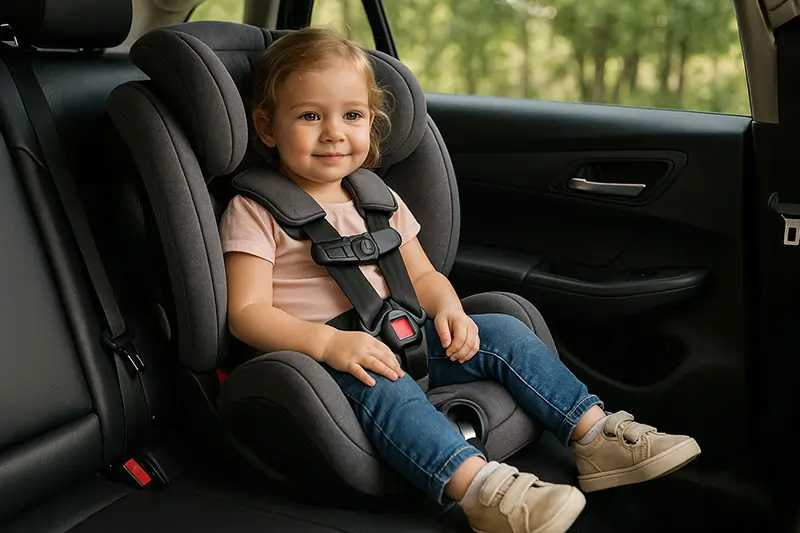When Is It Safe for Children to Move to the Front Seat? Missouri’s Expert Advice
For parents in Missouri, ensuring the safety of their children in the car is a top priority. Car crashes remain a leading cause of injury and death for children in the United States. Understanding when a child can safely transition to the front seat is crucial for their protection. Missouri car seat laws provide some guidance, but expert recommendations go beyond the minimum legal standards.
Missouri’s Legal Requirements for Car Seats
Missouri car seat laws outline the minimum legal requirements for child passenger safety. According to these laws, children under the age of 4 must be in a child safety seat, and those under 8 must be in an appropriate child restraint system unless they weigh at least 80 pounds or are at least 4 feet 9 inches tall. These regulations aim to ensure that children are secured in a way that fits their size and age.
But the law doesn’t say exactly when a child can sit in the front seat. Parents can make that choice, but they are encouraged to follow the rules set by national safety experts.
What the Experts Recommend
While Missouri law leaves some flexibility, safety organizations like the American Academy of Pediatrics (AAP) and the National Highway Traffic Safety Administration (NHTSA) are clear: children under 13 years of age should ride in the back seat.
It’s easy to understand: airbags are meant to keep adults safe, but they can be very dangerous for kids. If there is a crash, the force of an airbag deploying can hurt or kill younger passengers. The back seat is safer, especially when the right restraint system is used.
Key Factors to Consider
Think about these things when deciding if your child is ready to sit in the front seat:
- Age
The back seat is the safest place for kids under 13. Age is still very important because of the risks of airbags, even if they have outgrown their booster seats. - Size and Maturity
A child who is physically large for their age but lacks the maturity to sit properly for the duration of a car ride may still be at risk. Slouching, leaning forward, or improper seatbelt use reduces safety. - Type of Vehicle
Some smaller cars have airbags that you can turn off. If your car has this feature and you want to let a child sit in the front seat, you must turn off the airbag. - Proper Use of Seatbelts
Kids should be able to sit with their backs against the seat, their knees bent comfortably over the edge, and the seatbelt snugly across their chest and upper thighs. The child isn’t ready if the seatbelt goes up on their stomach or neck.
Transitioning Safely
When your child meets the age recommendation and exhibits the maturity to sit properly for an entire trip, you may consider allowing them in the front seat under certain conditions:
- The seat is pushed back as far as possible from the dashboard.
- The child uses a seatbelt properly at all times.
- The front passenger airbag is turned off (if possible).
- You continue to monitor their behavior during rides.
Remember, this transition should not be rushed. The back seat is statistically the safest place in a vehicle for children under 13.
Setting a Good Example
Kids often act like adults. Always wear your seatbelt and sit up straight in the car. Teaching kids about safe habits from a young age makes sure they grow up knowing how important it is to be safe in a car.
Also, take the time to explain why the back seat is safer. When kids understand why rules are there, they are more likely to follow them and be aware of them.
The Importance of Staying Updated
As new research comes out, the rules for keeping kids safe in car seats change. Checking resources like the Missouri Department of Transportation, the AAP, or the NHTSA is a good way to stay up to date.
A lot of local police stations and hospitals will check your car seat or teach you how to use it for free. These services can help make sure that your child is not only in the right seat but also using it the right way.
Final Thoughts
Missouri’s car seat laws are a good starting point, but parents should also follow national safety guidelines. Keeping children in the back seat until they are at least 13 is one of the simplest and most effective ways to protect them on the road.
It’s tempting to let older kids “graduate” to the front seat as a sign of growing up. However, their safety should always come first. With the right knowledge and a cautious approach, you can make travel safer for your children at every stage.




